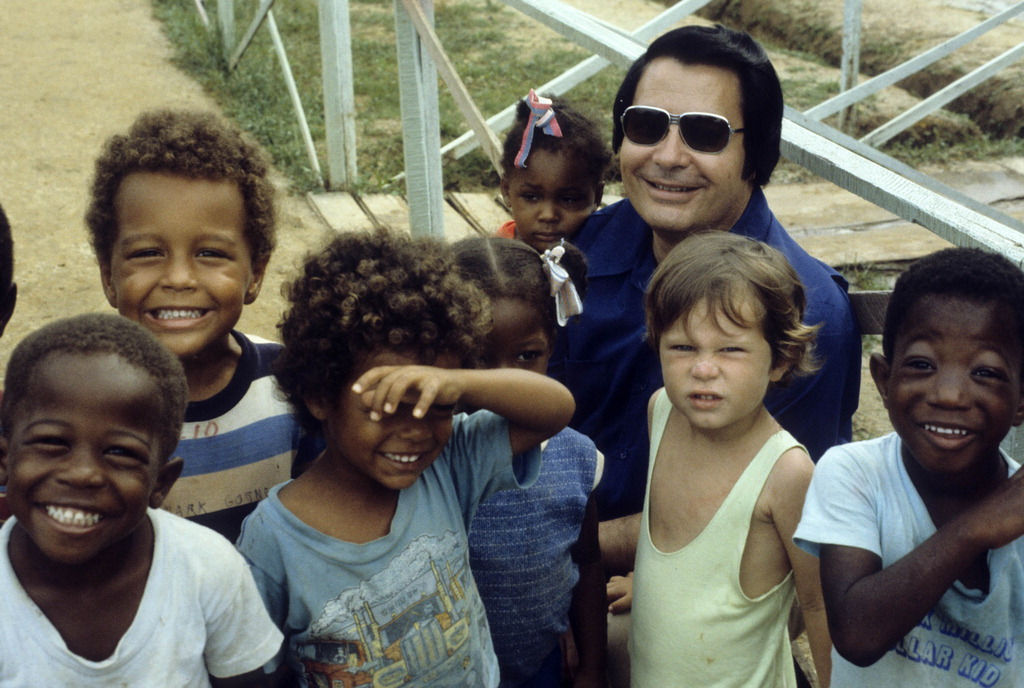By Chlotrudis Independent Film Society
Rating: 4 cats
Director: Stanley Nelson

Country: united_states
Year: 2007
Running time: 86
IMDB: http://www.imdb.com/title/tt0762111/
Michael says: “Most of us probably remember the late 70’s when Jim Jones and the People’s Temple committed mass suicide in Jonestown, Guyana. Now director Stanley Nelson has put together a documentary about the People’s Temple that tries to focus on the people involved and not solely on Jim Jones. Of course, Jones is a central figure in this nightmarish story, but Nelson’s film, which eschews narration for extensive interviews with two of the survivors of Jonestown, and many more survivors from the larger movement. By allowing the people who were involved tell the story, including Jones’ adopted son Jim Jones, Jr., from their point of view, Nelson manages to truly make the film about the People’s Temple as a whole and Jim Jones as their leader. Not that the film provides a nice pat answer to why this atrocity occurred, but it does provide some insight into the possibilities of what led to the deaths of over 900 people on November 18, 1978.
“Nelson does due diligence, exploring Jim Jones childhood and background, as well as some possible motivations for his eventual path to spiritual leader. At the same time, he introduces us to former members of the People’s Temple, and relatives of members as well. JONESTOWN spends a significant amount of time exploring the early days of the People’s Temple during the late 50’s and 60’s, as an integrationist movement that never took hold in Indiana where it began, and eventually moved to a small town north of San Francisco. It was during this time that the numbers of Jones’ followers swelled to the thousands, and those involved truly became trapped. It was for the most part a joyous time where people believed they could effect real change. The 1960’s were a time of possibility for such movements, but it was also a time of political assassinations, and Jones’ paranoia of the establishment grew during this time. It was also during this time that glimpses into his insanity were made evident, and overlooked by those caught up in his cause. When the People’s Temple moved to San Francisco in the late 60’s, Jones political influence grew, but as it did, so did the interest from the press, and it was only a matter of time before a handful of former members were convinced to talk about why they left. When Jones got wind of an impending newspaper article about him, he panicked and literally overnight, he and hundreds of his followers relocated to Guyana.
“Through the use of some amazing footage in Jonestown, Nelson conveys the joy and harmony that many members expressed in interviews. Through interviews with survivors, Nelson shows that what is on the surface, isn’t always the real story. During the chilling last quarter of the movie, Nelson slowly unspools the events leading up to the mass ‘revolutionary suicide’ the occurred. While the film is emotionally powerful and effective, as the credits rolled I found there were many things left out that I wanted to know about. Fortunately, the DVD contains several deleted scenes that for the most part, contained the very sequences that I was wondering about. Because the film is being distributed by PBS’ American Experience, I’m sure it was constrained in its running time, but I think I would have included some of these deleted scenes and sacrificed some others in order to provide some closure to the viewers, particularly revolving around the survivors.
“Regardless, this is a powerful documentary that at this early stage is in the running for a Best Documentary nod. 4 cats.”
Hilary says: “An engrossing and disturbing documentary. Jim Jones, the man, is shown to be a powerful but twisted individual, increasingly more power-hungry and misguided over the years as he gained more followers and moved them from Indiana to rural Northern California, to San Francisco, and finally to the place where more than 900 Peoples Temple members died in the jungles of Guyana.
“Previously I’d had no idea what a racial integrated group Peoples Temple was, deeply rooted in an apostolic/evangelical tradition. Nor did I know Jones and the Peoples Temple played a role in San Francisco politics particularly during George Moscone’s mayoral term, mobilizing support for Moscone and Jones then being appointed to the SF Housing Board. (This might be because I realized that a great portion of my knowledge of Jones and the Peoples Temple came from Armistead Maupin’s Tales of the City book series. Which although well-written and based on his experiences as a journalist and resident in ’70s San Francisco, are character-driven not to mention fictional.)
“I share some of Michael’s frustration as stated in his review as to the brevity of the doc, and like him, was glad to have the DVD version with the deleted scenes. Next up, I want to read up on the subject matter, perhaps the Seductive Poison book written by one of the survivors interviewed in the film. 4 cats”
